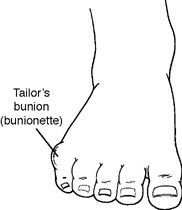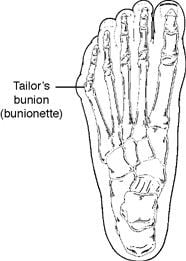SEBASTIAN LOCATION (New Location!)
13852 US Hwy 1
Sebastian, FL 32958
VERO BEACH LOCATION
- AminoFix injection for Plantar Fasciitis & Achilles Tendonitis
- Arch Pain
- Bunions And Bursitis
- Certified Wound Care Specialist
- Comprehensive Foot And Ankle Surgery
- Congenital Foot And Ankle Deformities
- Corns And Calluses
- Diabetic Foot Care
- Flat Feet
- Foot And Ankle Fractures
- Fungal Skin Infections
- Hammertoes
- Laser treatment for fungal nails
- Heel Spurs
- Metatarsal Disorders
- Pediatric Foot And Ankle Problems & Injuries
- Plantar Fasciitis
- Plantar Warts
- Reconstructive Surgery Of The Foot And Ankle
- Sports Related Injuries
- Traumatic Surgery Of The Foot And Ankle
- Treatment Of Charcot Foot And Ankle Deformities
- Treatment Of Ingrown, Fungal And Thickened Nail Conditions
Welcome to the Patient Information Center! Here you will find information about the most common foot and ankle ailments. Click on any of the issues below to find out more about specific problems and what treatment options are available. Here you will also find links to interesting websites pertaining to podiatry. If you have any questions, feel free to Contact Us through the website or give us a call!
Common Ailments
- Achilles Tendon Disorders
- Acute Inflammation
- Ankle Fracture
- Ankle Sprain
- Bunions
- Cavus Foot
- Charcot Foot
- Chronic Ankle Instability
- Crossover Toe
- Diabetic Complications and Amputation Prevention
- Diabetic Foot Care Guidelines
- Diabetic Peripheral Neuropathy
- Equinus
- Flexible Flatfoot
- Fractures of the Fifth Metatarsal
- Ganglion Cyst
- Gout
- Haglund’s Deformity (pump bump)
- Hallux Rigidus
- Hammertoes
- Heel Pain
- Ingrown Toenail
- Lisfranc Injuries
- Malignant Melanoma of the Foot
- Morton’s Neuroma
- Osteoarthritis of the Foot and Ankle
- Pediatric Flatfoot
- Pediatric Heel Pain
- Peroneal Tendon Injuries
- Plantar Fasciitis (Heel Pain)
- Plantar Wart (Verruca Plantaris)
- Posterior Tibial
- Puncture Wounds
- Rheumatoid Arthritis in the Foot and Ankle
- Sesamoid Injuries in the Foot
- Tailor’s Bunion
- Tarsal Coalition
- Tarsal Tunnel Syndrome
- Toe and Metatarsal Fractures
Helpful Information & Links
The path to board certification by the American Board of Podiatric Surgery (ABPS) begins after graduating from an approved podiatric surgical residency program after which our doctors pass a rigorous written examination to become board qualified. Next, doctors spent up to 6 years of their initial practice time collecting various patient cases which demonstrate to the ABPS their decision-making, competency, and skills as a foot and ankle surgeon. After submission of these cases, detailed review, and acceptance to the ABPS, doctors sit for the ABPS oral examination held in Chicago, IL.
- Dr. Paradoa has satisfied requirements by the ABPS to become board certified in Foot, Reconstructive Rearfoot/Ankle Surgery.
Our patients can feel confident that they are being treated by a foot
and ankle surgeon who has dedicated years of her education, training,
and experience to achieving board certification status by the American
Board of Podiatric Surgery.
The American Board of Podiatric Surgery website
has a wealth of information about podiatry and the requirements that
must be met.
A Doctor of Podiatric Medicine (DPM) is to the foot and ankle what a dentist is to the mouth, or an ophthalmologist to the eye — a doctor specializing in the prevention, diagnosis and treatment of foot disorders resulting from injury or disease. A DPM makes independent judgments, prescribes medications and performs surgery. The human foot has a complex interrelation with the rest of the body which means that it may be the first area to show signs of serious conditions such as diabetes and cardiovascular disease. Since the podiatric physician is often the first to detect symptoms of these disorders, he or she becomes a vital and sometimes lifesaving link in the health care team.
The American College of Foot & Ankle Surgeons is a professional society of thousands of foot and ankle surgeons. Their website contains a plethora of information about advances in podiatry and connects its members to share that knowledge.
FootHealthFacts.org is the official consumer website of the American College of Foot and Ankle Surgeons. This is a wonderful resource of information! From what foot injuries Olympians have suffered from during the 2012 London Olympics to a growing trend in lawn mower accidents, you will find interesting, informative and compelling articles in the world of Podiatry.
Patient Forms
Please print and fill out these forms so we can expedite your first visit:
In order to view or print these forms you will need Adobe Acrobat Reader
installed. Click here to download it: 
- Home >
- Articles >
- Bone/Joint/Tendon >
- Tailor's Bunion
 What Is a Tailor’s Bunion?
What Is a Tailor’s Bunion?
Tailor’s bunion, also called a bunionette, is a prominence of the fifth metatarsal bone at the base of the little toe. The metatarsals are the five long bones of the foot. The prominence that characterizes a tailor’s bunion occurs at the metatarsal “head,” located at the far end of the bone where it meets the toe. Tailor’s bunions are not as common as bunions, which occur on the inside of the foot, but they are similar in symptoms and causes.
Why is it called a tailor’s bunion? The deformity received its name centuries ago, when tailors sat cross-legged all day with the outside edge of their feet rubbing on the ground. This constant rubbing led to a painful bump at the base of the little toe.
Causes
Often a tailor’s bunion is caused by an inherited faulty mechanical structure of the foot. In these cases, changes occur in the foot’s bony framework, resulting in the development of an enlargement. The fifth metatarsal bone starts to protrude outward, while the little toe moves inward. This shift creates a bump on the outside of the foot that becomes irritated whenever a shoe presses against it.
Sometimes a tailor’s bunion is actually a bony spur (an outgrowth of bone) on the side of the fifth metatarsal head.
Regardless of the cause, the symptoms of a tailor’s bunion are usually aggravated by wearing shoes that are too narrow in the toe, producing constant rubbing and pressure.
 Symptoms
Symptoms
The symptoms of tailor’s bunions include redness, swelling, and pain at the site of the enlargement. These symptoms occur when wearing shoes that rub against the enlargement, irritating the soft tissues underneath the skin and producing inflammation.
Diagnosis
Tailor’s bunion is easily diagnosed because the protrusion is visually apparent. X-rays may be ordered to help the foot and ankle surgeon determine the cause and extent of the deformity.
Non-Surgical Treatment
Treatment for tailor’s bunion typically begins with non-surgical therapies. Your foot and ankle surgeon may select one or more of the following:
- Shoe modifications. Choose shoes that have a wide toe box, and avoid those with pointed toes or high heels.
- Padding. Bunionette pads placed over the area may help reduce pain.
- Oral medications. Nonsteroidal anti-inflammatory drugs (NSAIDs), such as ibuprofen, may help relieve the pain and inflammation.
- Icing. An ice pack may be applied to reduce pain and inflammation. Wrap the pack in a thin towel rather than placing ice directly on your skin.
- Injection therapy. Injections of corticosteroid may be used to treat the inflamed tissue around the joint.
- Orthotic devices. In some cases, custom orthotic devices may be provided by the foot and ankle surgeon.
When Is Surgery Needed?
Surgery is often considered when pain continues despite the above approaches. In selecting the procedure or combination of procedures for your case, the foot and ankle surgeon will take into consideration the extent of your deformity based on the x-ray findings, your age, your activity level, and other factors. The length of the recovery period will vary, depending on the procedure or procedures performed.
Appointment Request
Our Locations
Find us on the map
Hours of Operation
Our Regular Schedule
Vero Beach Location
Monday:
9:00 AM-5:00 PM
Tuesday:
9:00 AM-5:00 PM
Wednesday:
9:00 AM-5:00 PM
Thursday:
9:00 AM-5:00 PM
Friday:
9:00 AM-12:00 PM
Saturday:
Closed
Sunday:
Closed
Sebastian Location
Monday:
9:00 AM-5:00 PM
Tuesday:
9:00 AM-5:00 PM
Wednesday:
9:00 AM-5:00 PM
Thursday:
9:00 AM-5:00 PM
Friday:
9:00 AM-12:00 PM
Saturday:
Closed
Sunday:
Closed
